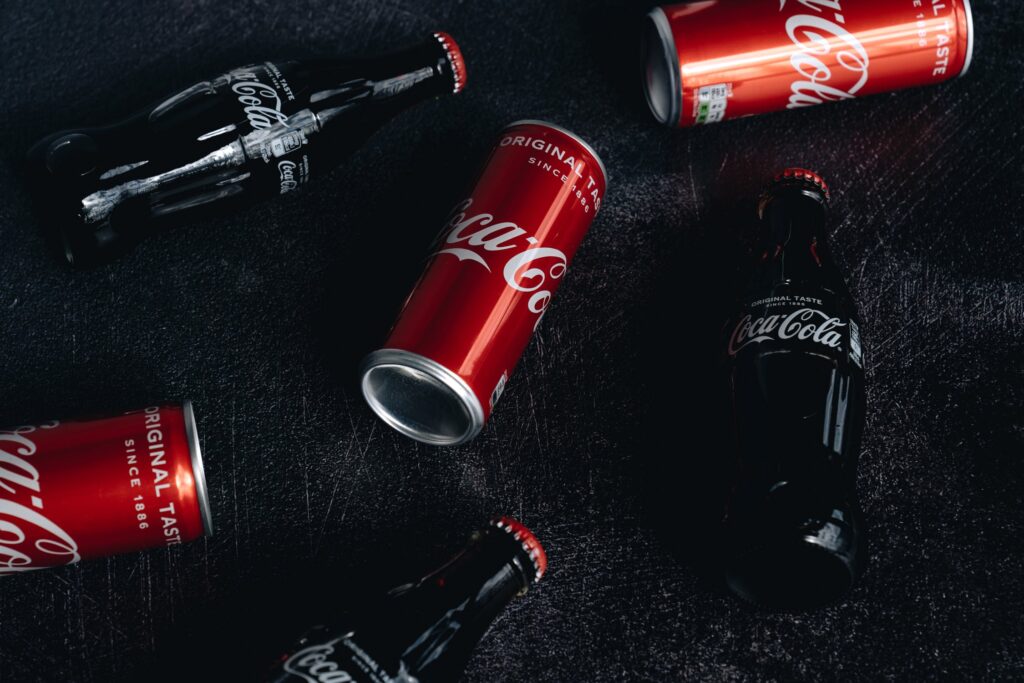A2Z Drone Delivery and DroneUp joined a partnership to complete commercial deliveries of Coca-Cola cans with Coffee products to residents of Coffee County, Georgia. DroneUp managed the flights using A2Z’s Rapid Delivery System (RDS1) and Walmart helped facilitate the deliveries.
The Rapid Delivery System (RDS1) used a tether that drops packages to their destination, which reduced what DroneUp calls “time-on-station” to just 30 seconds. Time-on-station refers to the amount of time the drone takes to fly in a given area, which in this case is the delivery zone.
Aaron Zhang, founder of A2Z Drone Delivery, explained:
“For our partners at DroneUp to put their trust in our system was the best proof of concept that we could imagine and was a memorable benchmark for our whole team. The unique capabilities of the RDS1 were tailor-made for this type of residential delivery where our tethered free fall mechanism can accurately and quickly deposit payloads while hovering far from people, homes, trees and utility wires.”*
The RDS1, which was launched in October 2020, and is now commercially available, makes it possible for a package weighing up to 4.4 pounds to be dropped via a tether at a height of as much as 150 feet. The drone’s delivery mechanism controls the payload’s descent and speed with a range of 2.17 miles.
According to A2Z, the ability to deliver a payload from cruising altitude eliminates dangers associated with the drone’s propellers while reducing noise.
Zhang explained:
“Our rapid delivery system is ideal for situations where a drone cannot safely approach close proximity to its delivery location such as delivering radios or medical supplies to a search-and-rescue team in a forest or as a more efficient option to deliver and retrieve port documents from awaiting cargo ships. While other drone delivery platforms are designed to hover close to the ground, our tethered free-fall delivery technique enables efficient and accurate placement without the UAV approaching people, structures or other obstructions like trees and wires.”*
The Rapid Delivery System (RDS1) features the following:
- “A payload status detection system.
- Preflight weight check.
- Rapid descent calculations to ensure the payload is dropped safely.
- Manual delivery controls that allow pilots to control the payload and its retrieval.
- Emergency payload abandonment that allows for the release of payload in emergency situations.
- A passive payload lock to protect against unwanted payload release.”*
- DroneUp flight services for drone operators, include:
- “Data analysis
- Drone program development
- Regulatory consulting
- Training
- Equipment
- Personnel”*
DroneUp pilot Ethan Burnett, who flew delivery missions with the RDS1, made the following point:
“No matter how many flight hours you have as a UAV (unmanned aerial vehicle) pilot, adding the dynamic of delivering packages to the ground is still a new concept, so having the tether controls seamlessly integrated into the pilot software is imperative. Also, knowing the redundant safety systems are in place gives you the added peace of mind you need as you become accustomed to flying a drone with a payload slung below it.”*
The Rapid Delivery System (RDS1)also features the following:
- “Payload status detection — Monitors payload throughout flight and delivery, enabling eventual beyond-visual-line-of-sight (BVLOS) missions.
- Pre-flight weight check — Ensures the flight platform is not overloaded and controls payload deceleration.
- Rapid descent calculation — Automatically determines when to slow the payload free fall at the proper distance from the ground.
- Manual delivery control — Intelligent onboard systems provide safeguards while allowing pilots to manually control tethered payload delivery and retrieval.
- Emergency payload abandonment — Allows the pilot to quickly detach the drone from its payload amid flight emergencies.
- Transverse tether winding — Ensures the tether is tightly woven on the reel to maximize capacity and prevent knotting.
- Passive payload lock — Safeguards against payload loss or tether slippage in case of unforeseen power fluctuations, and eliminates the need for additional payload housing.”*
Although A2Z and DroneUp are the most recent companies to announce drone delivery tests, many are rapidly following their example. GoForIndustries and Aurora Aerial are testing drone delivery in Canada before rolling it out to other markets, such as the U.S. and others. Drone provider AgEagle joined a partnership with Valquari, a Chicago-based startup that is building a drone delivery that allows drones to deliver packages directly into a safe and/or secure box. They demonstrated this at Sun City by having a drone pick up a package with beverages at the Valquari Drone Delivery Station outside the clubhouse restaurant and deliver that package to a second delivery station, which is located on the course.
Flytrex, a Israeli drone company, has been testing drone delivery in North Carolina by delivering items from restaurants in the Holly Springs Towne Center to a location within a five-minute drone flight. Menu items such as Blizzards, pastries, and light meals at Starbucks and Dairy Queen.
Future
A2Z Drone Delivery and DroneUp partnership in completing commercial deliveries. The Rapid Delivery System (RDS1) used a tether that drops packages to their destination, which reduced DroneUp’s deliveries to a mere 30 seconds. Although A2Z and DroneUp are the most recent companies to announce drone delivery tests, many are rapidly following their example.



